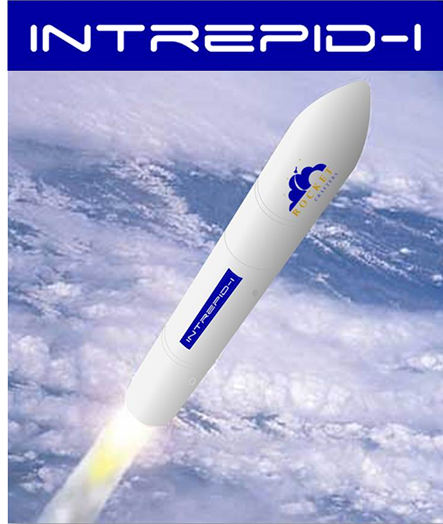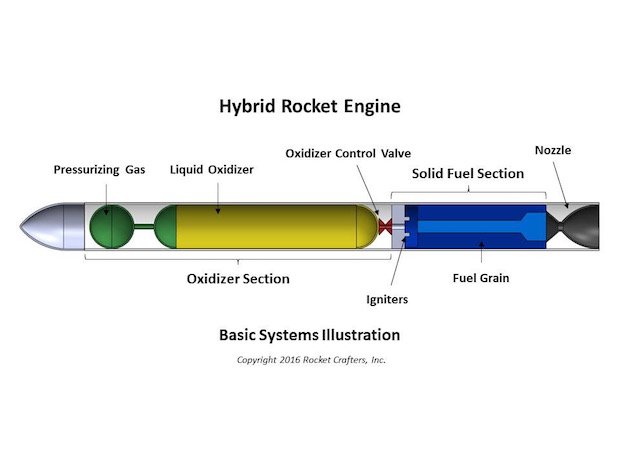Rocket Crafters Inc. (RCI), a U.S. space technology startup, have been granted a patent for their 3D printed rocket fuel technology. Operating out of Utah, the company refer to themselves as, “a highly innovative development-stage company that is crafting a new era in space access.”
The patented 3D printed rocket fuel grains are solid propellants. Using additive manufacturing means the propellants can be 3D printed in a specific pattern in order to determine how the fuel burns. Solid propellants once lit, burn continuously until they burn all their fuel. Rocket Crafters will incorporate the fuel system in their Intrepid-1 spacecraft which is on track to be launched in 2019, 5 years after SpaceX launched using their first 3D printed part.
According to President & CTO Ronald Jones, the patent “enables for the first time the use of much safer, consistent performing hybrid rocket engines to power orbital launch vehicles”. The hybrid engine will utilize both solid 3D printed propellants and liquid fuel.

Why 3D printing?
3D printing improves the consistency and reliability of the solid propellant fuel. The precision of additive manufacturing allows the team at Rocket Crafters to create, “internal geometric patterns designed to significantly increase the amount of fuel that is available for combustion on a second-by-second basis during the rocket engine’s operation.” Controlling how the fuel burns increases efficiency of the spacecraft’s engine.
Ronald Jones also stated how the 3D printed technique mitigates prior issues of excessive vibrations created by conventional solid propellants,
The fuel grains we are able to produce using this technology provides the structural strength needed to minimize vibration build-up while still enabling the rocket engine to consume high energy solid fuel blends at an accelerated pace.
Intrepid-1
Incorporating the rocket fuel, this patent will enable the creation of a more affordable launch vehicle. The Intrepid-1 has been designed for low-orbit flights with the small satellite (SmallSats) community in mind. The fuel will be used to launch the Intrepid-1 to specific locations in order to deploy the SmallSats. Elon Musk similarly cited the launch of satellites to be a main source of funding for the future SpaceX Mars missions during his talk at the IAC.

Chairman and CEO of RCI, and Former NASA astronaut Sid Gutierrez also spoke regarding the announcement,
This new patent shows our commitment to making access to space safer, more reliable, and more affordable than ever before. I have believed for years that hybrid rockets, due to the inherent safety when propellants are protected against accidental detonation by storing them in different states, could be the solution to make rocket powered flight as safe as airline travel one day. With our 3D printed fuel technology, we now have the means to make this a reality.
It seems Sid Gutierrez has similar expectations for space travel as Elon Musk whose plans on bringing large numbers of humans to Mars also has parallels with airline travel. Elon Musk, SpaceX founder, joined companies such as Lockheed Martin and Blue Origin when he spoke at the International Astronautical Congress (IAC) in Guadalajara, Mexico last year, about how they are using 3D printing to make space more accessible.
Featured image shows The Intrepid-1. Image via Rocket Crafters.


